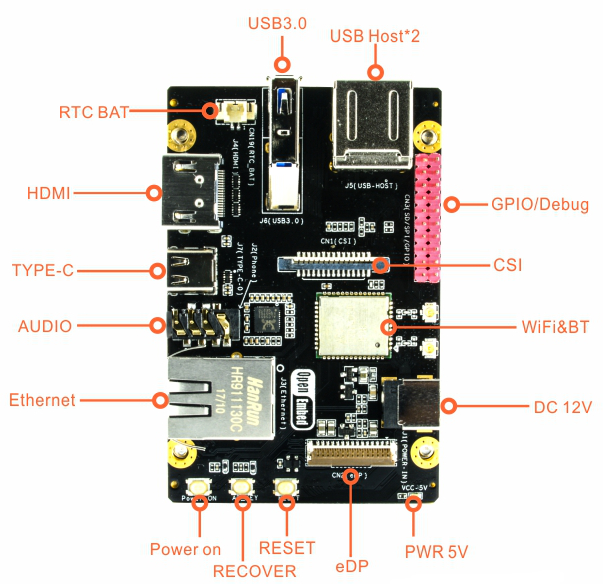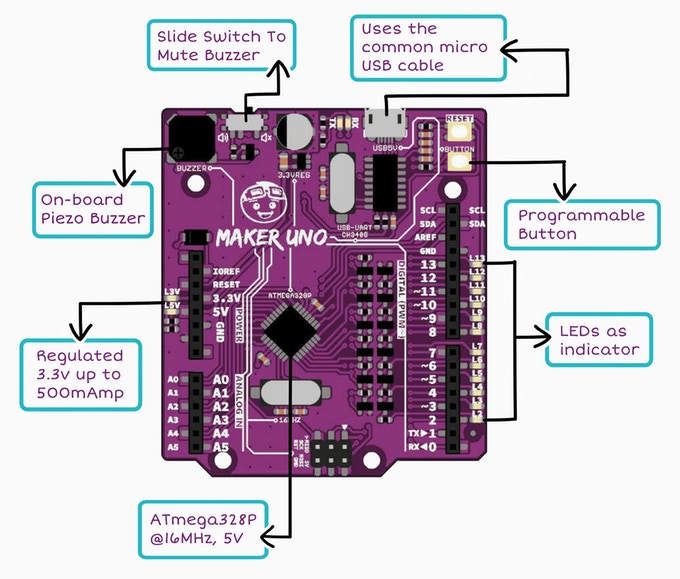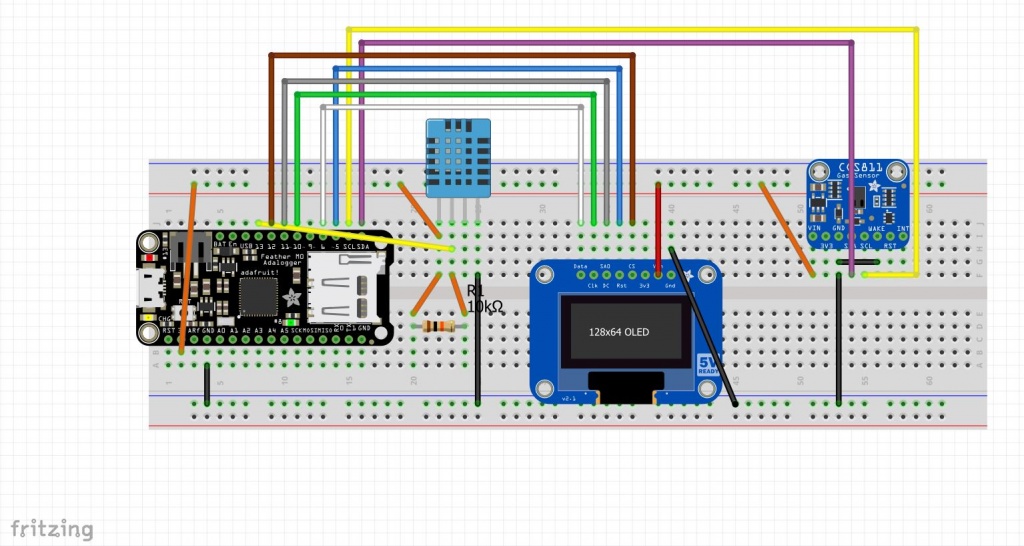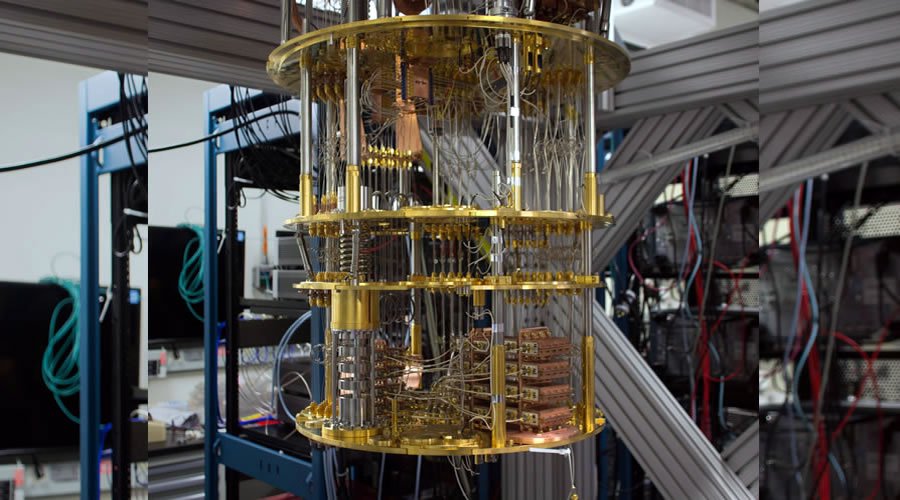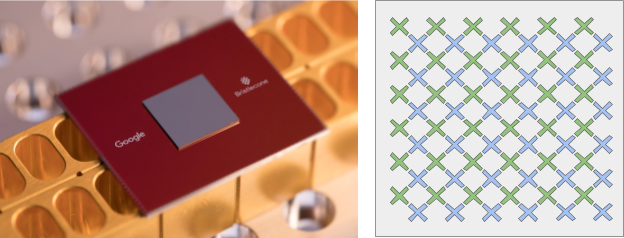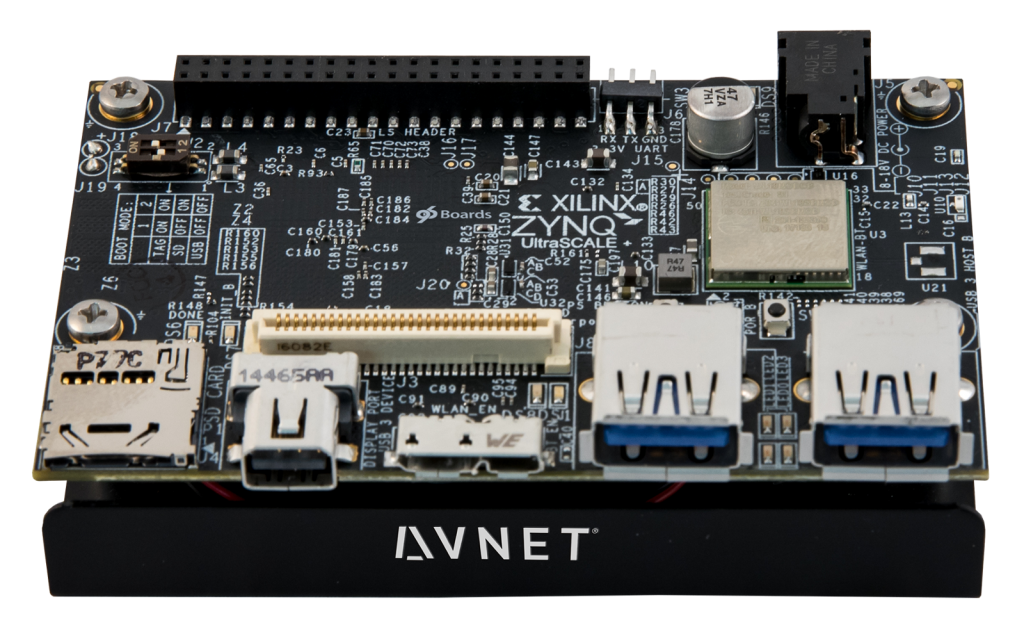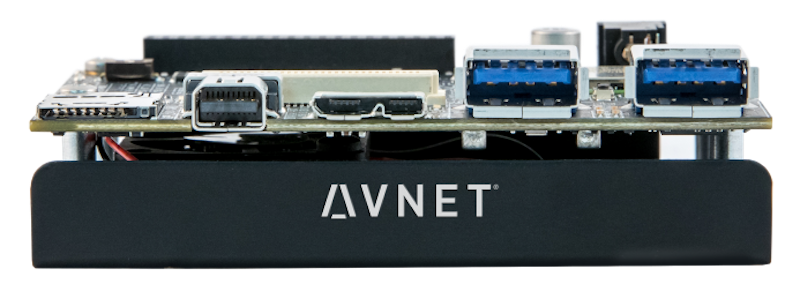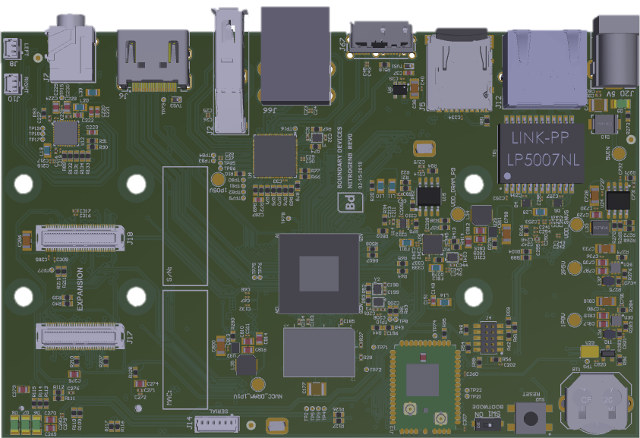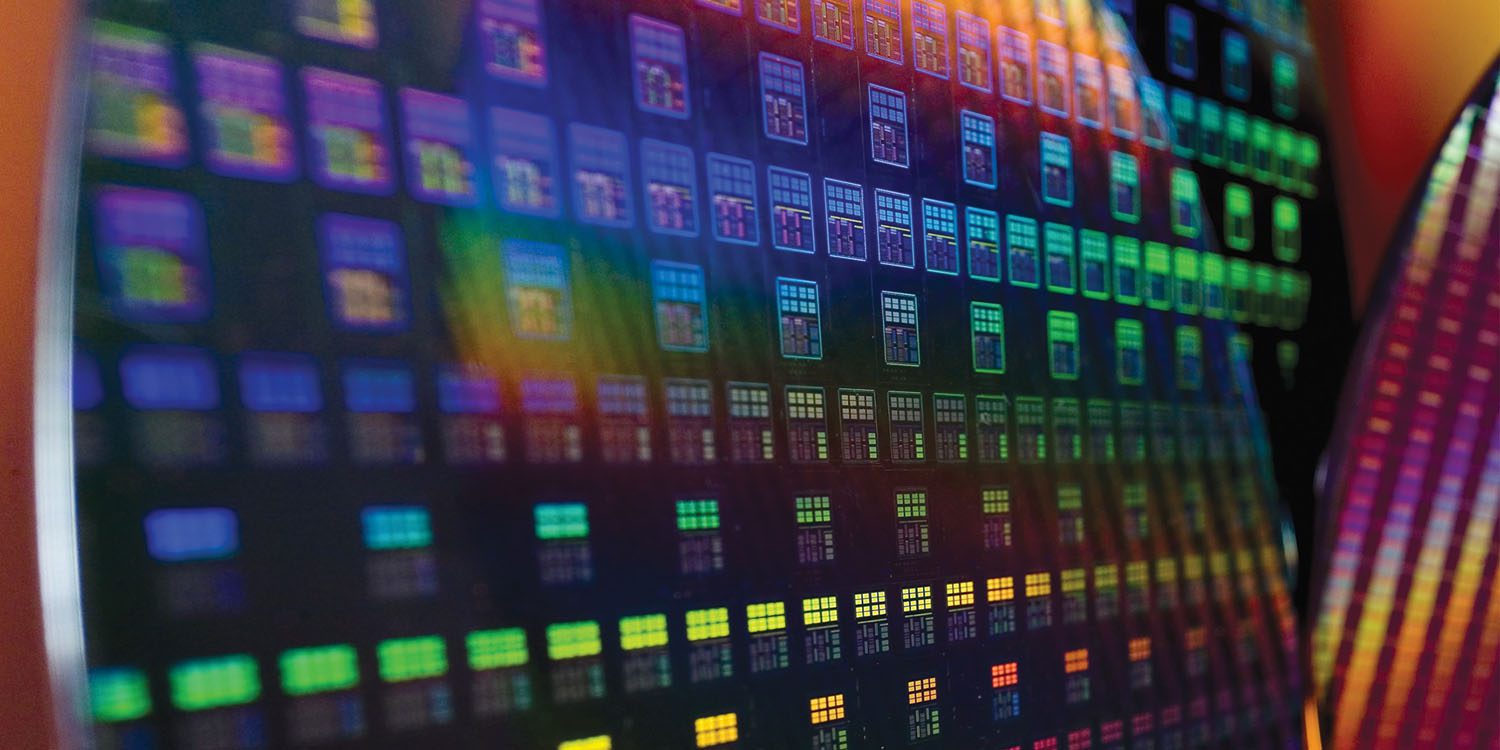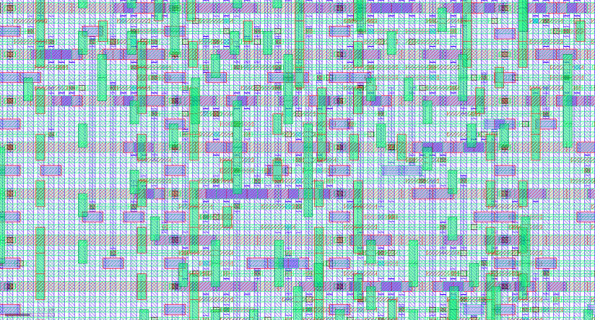The RK3399 processor from Rockchip has seen adoption in some boards in recent times. The Rockchip RK3399 processor has been deployed on boards like the Odroid-N1 board, Firefly’s Firefly-RK3399, the Theobroma RK3399-Q7 SoM, and more recently the Shenzhen Xunlong’s Orange Pi RK3399.
The RK3399 is a low power, a high-performance processor for computing, personal mobile internet devices, and other smart device applications. Based on Big Little architecture, it integrates dual-core Cortex-A72 and quad-core Cortex-A53 with a separate NEON coprocessor and also a Mali T860 MP4 GPU all in one single package. It is the processor to beat and due to its display capabilities has made it seen applications in TV Boxes especially in China.
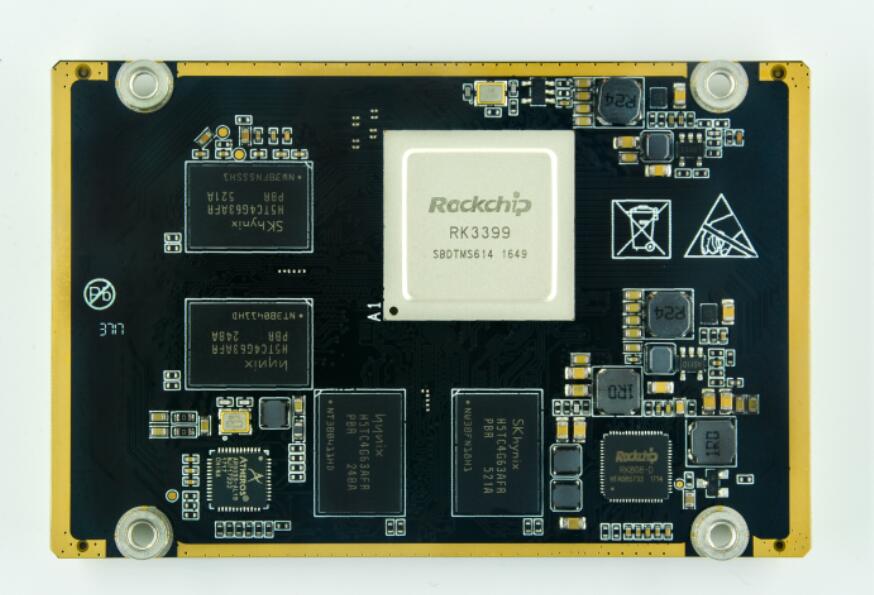
If you are still on the lookout for a system-on-module based on Rockchip RK3399, then another SoM to put for consideration is the OpenEmbed em3399. OpenEmbed has launched their first system-on-module referred to as the em3399 SoM board and even comes with an optional “emPAC-RK3399-EVB” evaluation board.
The em3399 SoM supports 2GB to 4GB DDR3L RAM and 16GB to 128GB eMMC 5.1. It provides support for HDMI 2.0, DisplayPort 1.2, MIPI-DSI (dual-channel) and eDP 1.3 display interfaces. It comes with a 2x MIPI-CSI camera interface, Gigabit Ethernet, USB 3.0, USB type C, USB 2.0, SPi, i2C, GPIO and several others.
The following are some of the specifications of the OpenEmbed em3399:
- SoC – Rockchip RK3399 hexa-core processor with 2x Cortex-A72 cores, 4x Cortex-A53 cores, and an Arm Mali-T860MP4 GPU
- System Memory – 2GB or 4GB DDR3L RAM
- Storage – 16GB to 128GB eMMC 5.1 flash
- Connectivity – Gigabit Ethernet transceiver (Atheros AR8033)
- Power Management – Rockchip RK808D PMIC
- 2x 120-pin board-to-board connectors (0.8mm pitch)
- Camera – 2x MIPI-CSI (up to 13MP or dual 8MP); VOP (up to 5MP)
- Audio – S/PDIF output, 8-channel I2S, HDMI and DP
- Connectivity – Gigabit Ethernet
- USB – 2x USB 3.0 host ports or 2x USB type C, 2x USB 2.0 host
- 1x PCI-e x1
- 5x SPI, 8x I2C, 100+ GPIOs
- Display:
- HDMI 2.0 port with audio for up to 4K @ 60Hz
- DisplayPort 1.2 with audio for up to 4K @ 60Hz
- MIPI-DSI (dual-channel) at up to 2560×1600 @ 60 Hz
- eDP 1.3 (4-lane)
- Dimensions – 84 x 55 mm
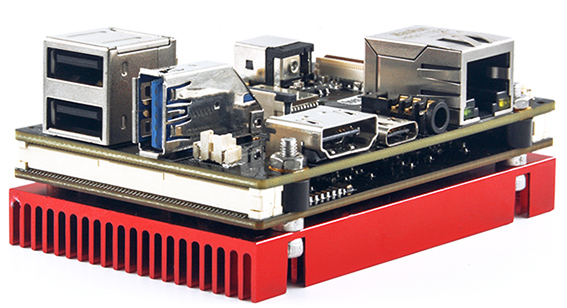
The emPAC-RK3399-EVB evaluation board has the same footprint as the em3399 SoM and stacks on top of the module via a dual 120-pin connector. The em3399 SoM is layered between the carrier board on top and also a heatsink on the bottom.
The emPAC-RK3399-EVB development board extends the em3399 with single a Gigabyte Ethernet port, USB 3.0, and USB Type-C ports, as well as dual USB 2.0 ports. It also extends out the HDMI 2.0 port, an audio jack, and MIPI-CSI and eDP connectors. A Wireless WiFi/Bluetooth module is available, and 20 GPIO pins have been extended out as well.
The following are the specification of the emPAC-RK3399-EVB:
- 2x 120-pin board-to-board connectors for em3399 CPU module
- Display – HDMI 2.0a port, eDP connector, DisplayPort via USB type C port (TBC)
- Audio – Via HDMI, 3.5mm audio jack (mic + stereo audio)
- Camera – 1x CSI connector
- Connectivity – Gigabit Ethernet, WiFi & Bluetooth module
- USB – 2x USB 2.0 ports, 1x USB 3.0 port, 1x USB type C port
- Expansion – 20-pin GPIO/Debug header with GPIOs, UART, 3.3V, 3.3V, 1.8V, GND
- Misc – Power, Recovery and reset buttons; 5V power LED; 2-pin RTC battery header
- Power Supply – 12V DC via power barrel jack
- Dimensions – 84 x 55 mm
The company provides support for Android 7.1 and a Linux distribution with an Ubuntu Core still under development. You can purchase the SoM and the evaluation board on the OpenEmbed’s Taobao page for respectively 650 CNY ($102.50) or 899 CNY (~$142 US) for the 2GB/16GB configuration and 950 CNY ($151) or 1,199 CNY ($189) or for the 4GB/32GB models.



